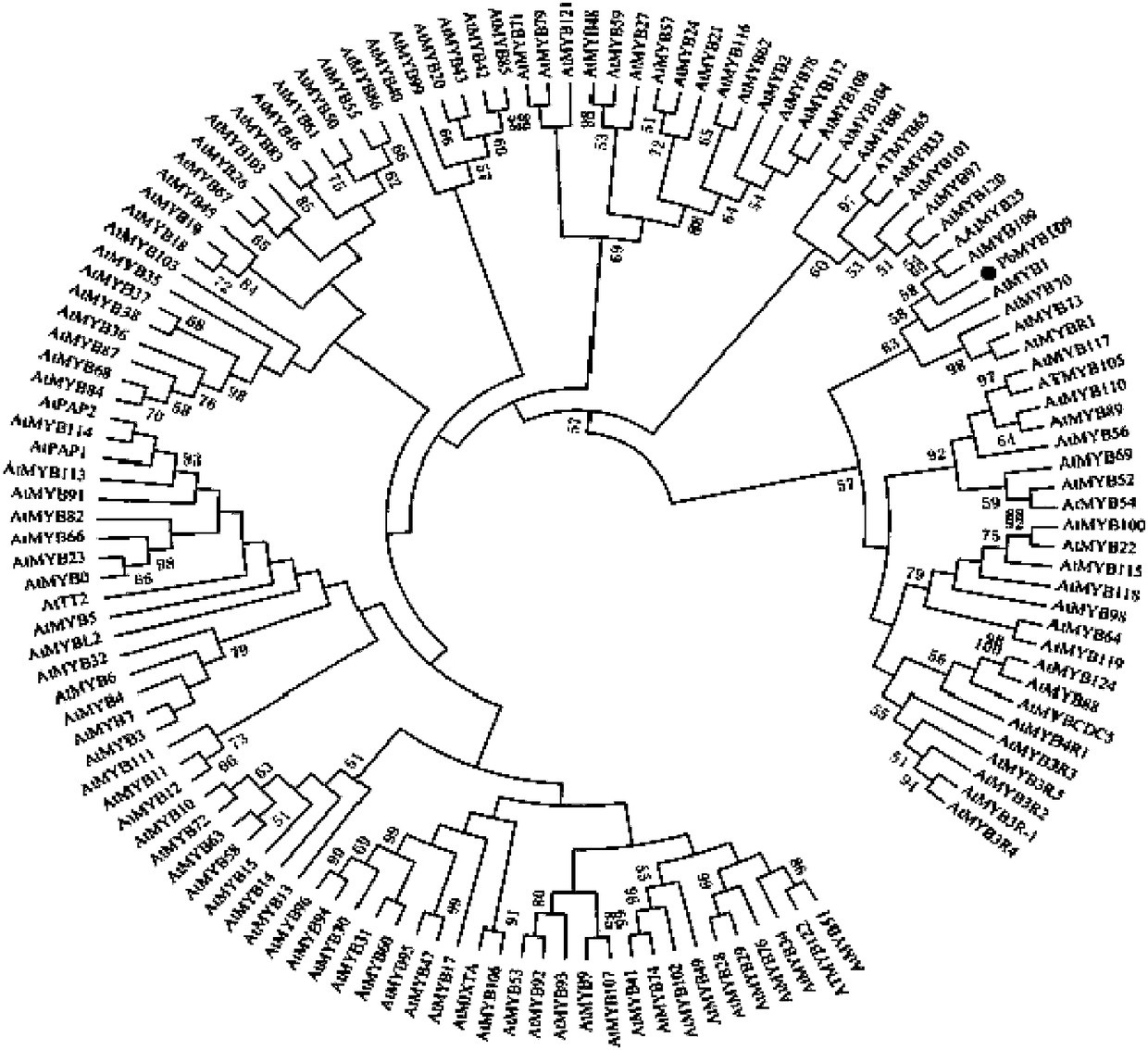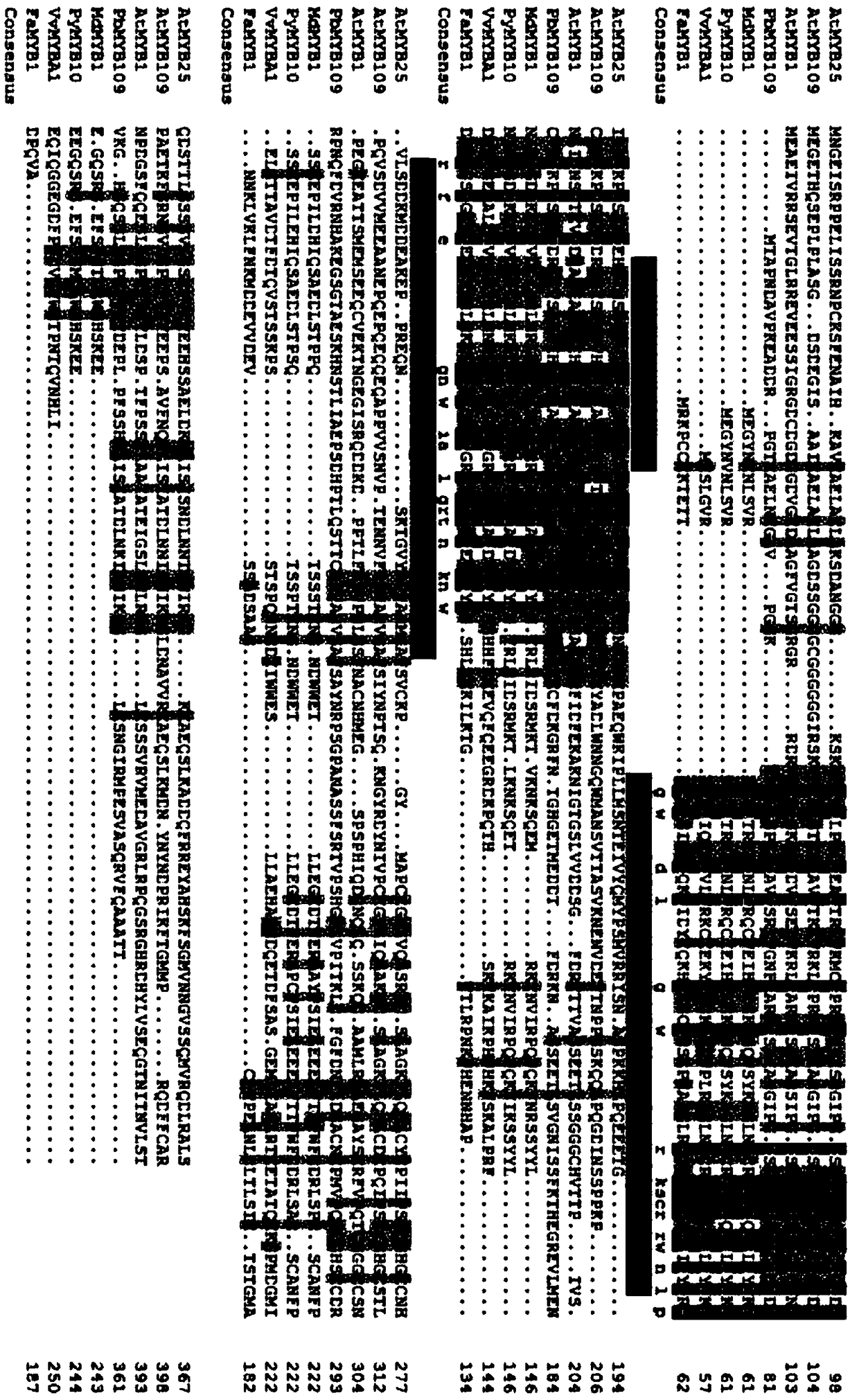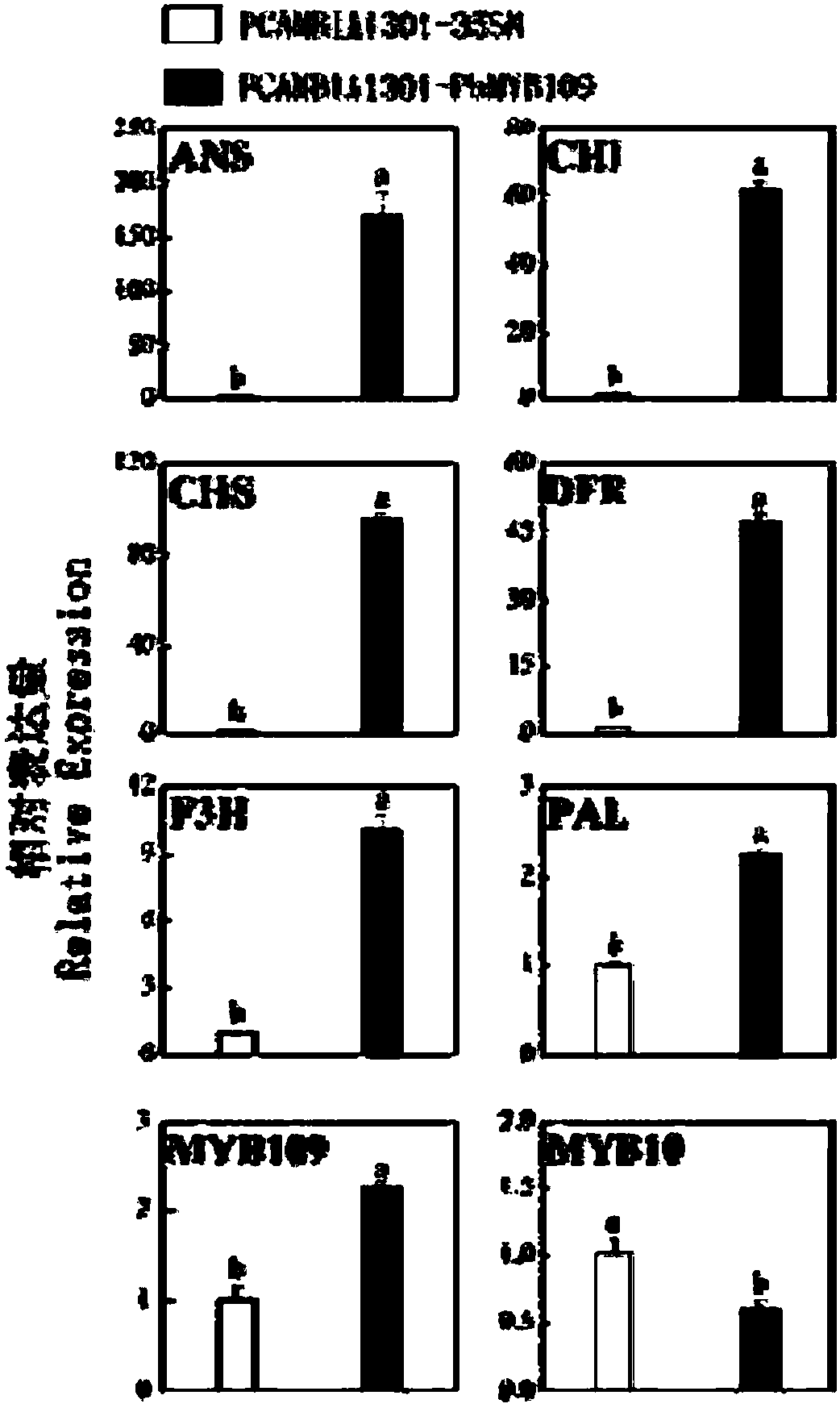Pear anthocyanin synthesis transcription factor PbMYB109 and application thereof
A technology for transcription factors and pigments, applied in the application, genetic engineering, plant genetic improvement and other directions, can solve the problems that need to be confirmed, the anthocyanin biosynthesis has an impact, and the PbMYB109 gene has not been reported to participate in the anthocyanin synthesis. The effect of promoting synthesis
- Summary
- Abstract
- Description
- Claims
- Application Information
AI Technical Summary
Problems solved by technology
Method used
Image
Examples
Embodiment 1
[0026] Cloning and sequence comparison of embodiment 1PbMYB109 gene
[0027] 1. Design primers
[0028] Cloning primers were obtained through library screening and primer design; their specific sequences are as follows:
[0029] Clone-F1: 5'-ATGACGGCCCCAAACGACG-3'; (SEQ ID NO.3)
[0030] Clone-R1: 5'-CTAGGTAGTGGCAGCTGCTTGAAAG-3'. (SEQ ID NO.4)
[0031] 2. PCR reaction amplification
[0032] The PCR amplification reaction system included: 2 μL of Primer F (10 mmol L -1 ), Primer R (10mmol·L -1 ), Template cDNA, 29μL of ddH 2 O. 10 μL of 5×TransStart FastPfu Fly Buffer, 4 μL of 2.5mMdNTPs, 1 μL of 5×TransStart FastPfu Fly DNA Polymerase; PCR reaction conditions: 95°C for 2 min, 95°C for 20 s, 60°C for 2 s, 72°C for 2 s , 40 cycles, and a final extension of 10 min at 72°C.
[0033] 3. Purification and recovery
[0034] Then, 5 μL of the PCR product was subjected to 1.0% agarose gel electrophoresis to detect the amplification result, and the SanPrep Column PCR Product Rec...
Embodiment 2
[0040] Transient expression of embodiment 2PbMYB109
[0041] 1. Primer design
[0042] A pair of primers were designed at both ends of the sequence of the cloned PbMYB109 gene, and the primer sequences were:
[0043] Prime-F: 5'-GGCCGGTACCATGACGGCCC-3'; (SEQ ID NO.5)
[0044] Prime-R: 5'-CGGGATCCCTAGGTAGTGGCAGC-3'; (SEQ ID NO.6)
[0045] 2. PCR amplification
[0046] According to the analysis of the sequence, the expression vector pCambia1301-35SN has the enzyme cutting sites BamHI and KpnI, and through PCR amplification, the required enzyme cutting sites are respectively introduced before and after the target gene; the reaction system of the PCR amplification includes: 1.5μL Primer F (10mmol·L -1 ), 1.5μL Primer R (mmol L -1 ), 2μL Template cDNA, 32μL ddH 2 O, 10 μL 5×Prime STAR Buffer (Mg2+Plus), 4 μL dNTP; PCR reaction conditions were 98°C pre-denaturation for 2 min, 98°C denaturation for 10 s, 58°C annealing for 5 s, 72°C extension for 1 min, 35 cycles, and finally 7...
Embodiment 3
[0074] Embodiment 3 Arabidopsis transformation
[0075] 1. Prepare 1 L of resuspended osmotic culture medium with a pH value of 5.7 for use. The culture medium includes: 1 / 2 MS medium, 500 μL Silwet L-77, 50 g of sucrose, and 0.5 g of MES.
[0076] 2. Construct the overexpression vector PCAMBIA1301-PbMYB109, and then transform it into Agrobacterium, inoculate the transformed Agrobacterium into an EP tube containing 1mL medium, cultivate for 13h, and then expand the culture to 100mL, continue Grow to OD600 =1.0 or so, enrich the cells, then add an appropriate amount of resuspended osmotic culture solution to resuspend the cells to OD 600 About 0.8.
[0077] 3. Prepare healthy Arabidopsis plants, cut them off when the plants grow terminal inflorescences, and then stimulate the occurrence of axillary inflorescences through the Agrobacterium cell suspension obtained in step 2. When more axillary inflorescences grow to 1- After transformation at a length of 10 cm, the T1 generati...
PUM
| Property | Measurement | Unit |
|---|---|---|
| Molecular mass | aaaaa | aaaaa |
Abstract
Description
Claims
Application Information
 Login to View More
Login to View More - R&D
- Intellectual Property
- Life Sciences
- Materials
- Tech Scout
- Unparalleled Data Quality
- Higher Quality Content
- 60% Fewer Hallucinations
Browse by: Latest US Patents, China's latest patents, Technical Efficacy Thesaurus, Application Domain, Technology Topic, Popular Technical Reports.
© 2025 PatSnap. All rights reserved.Legal|Privacy policy|Modern Slavery Act Transparency Statement|Sitemap|About US| Contact US: help@patsnap.com



